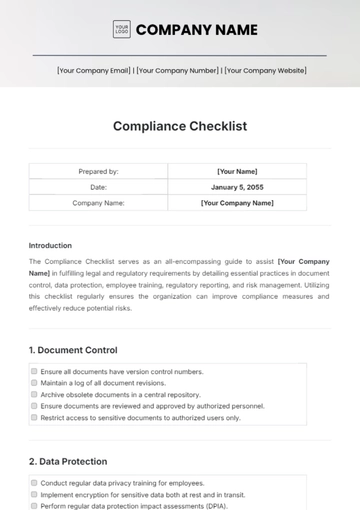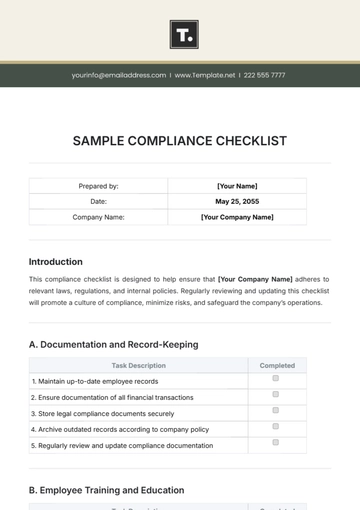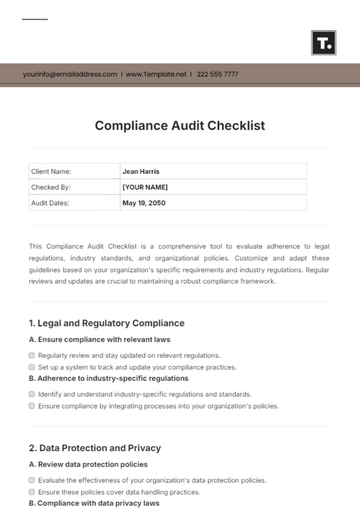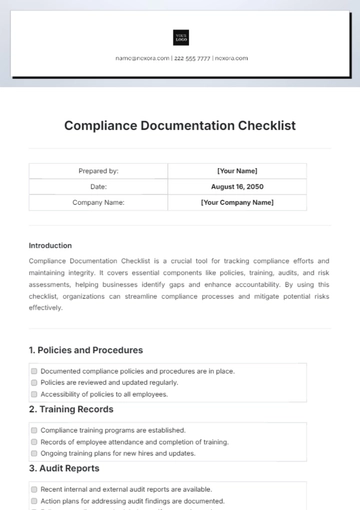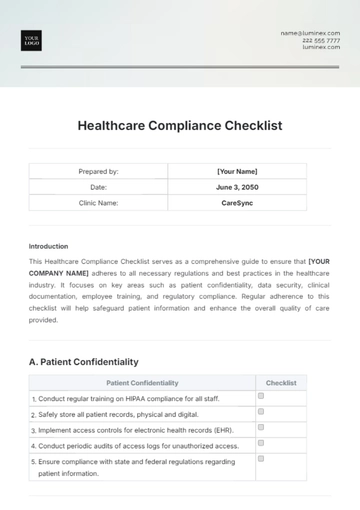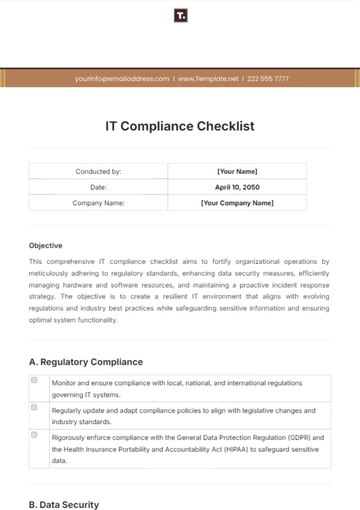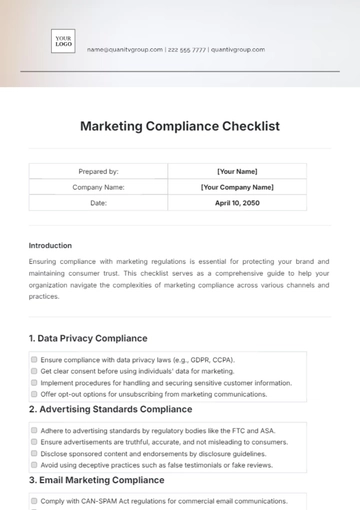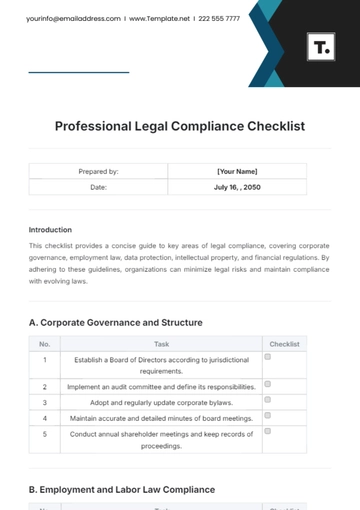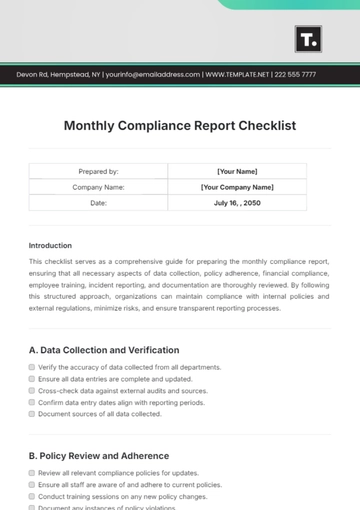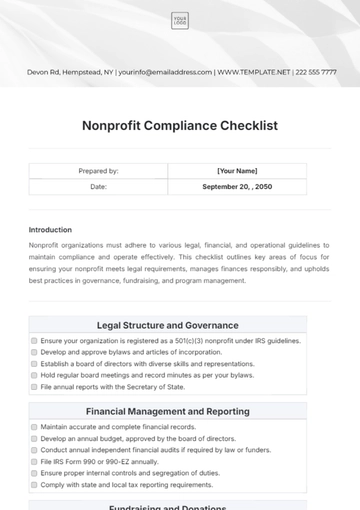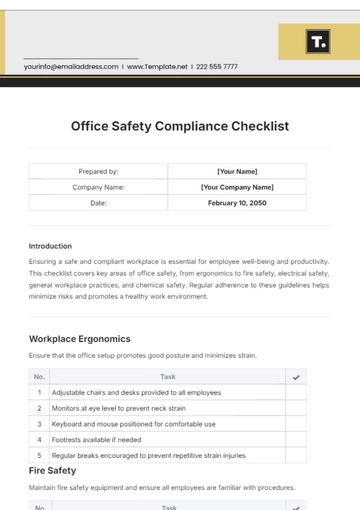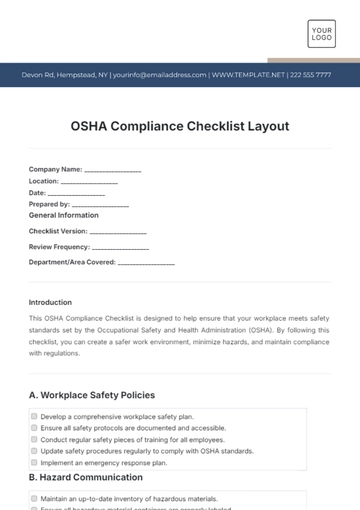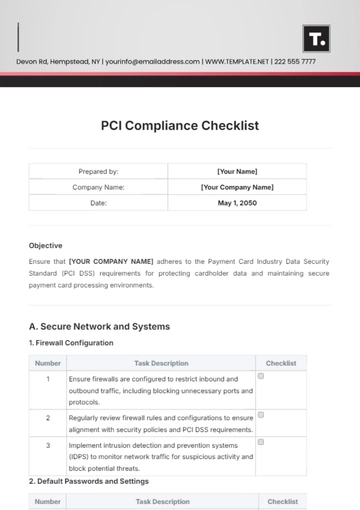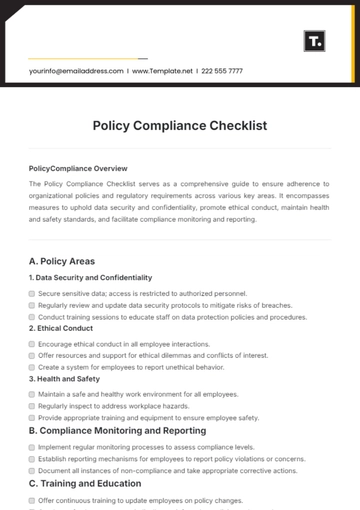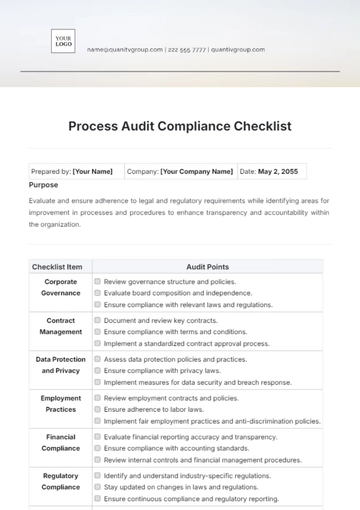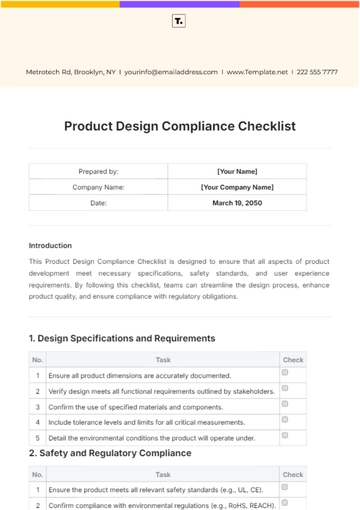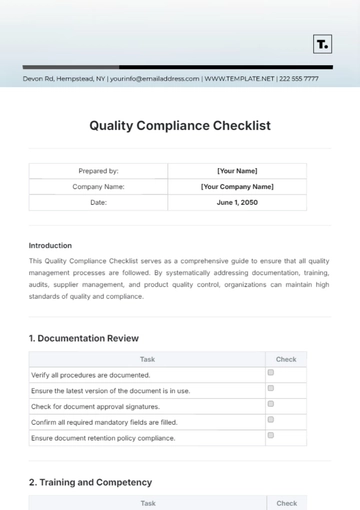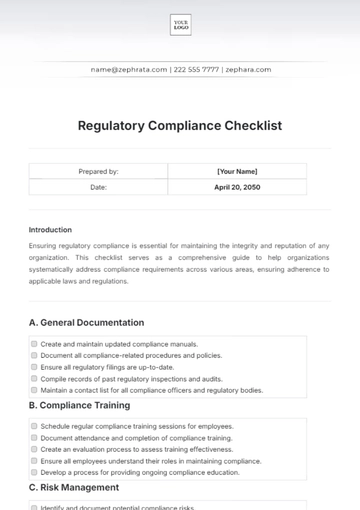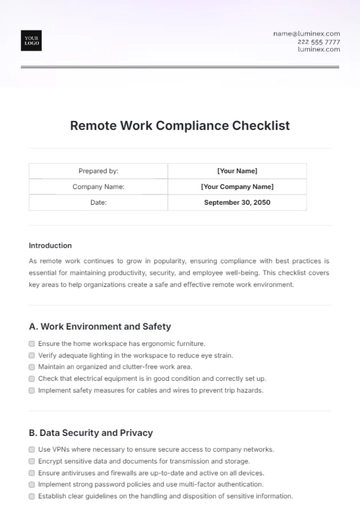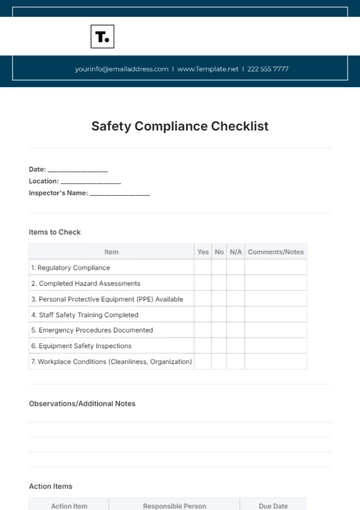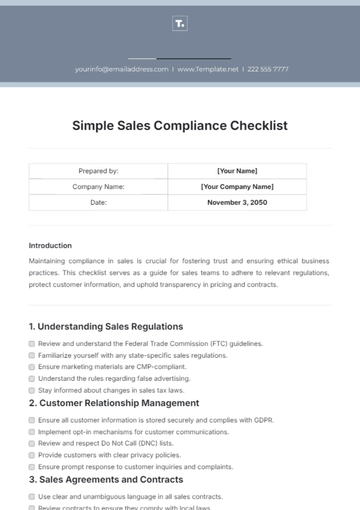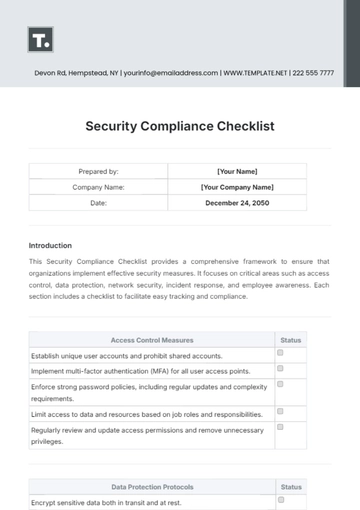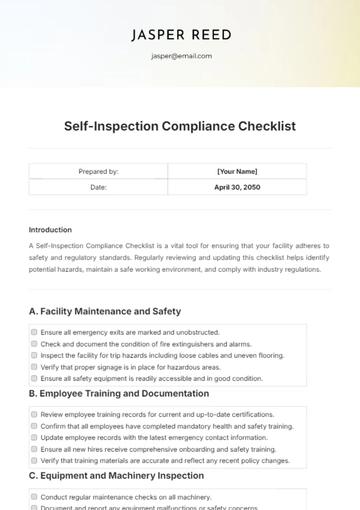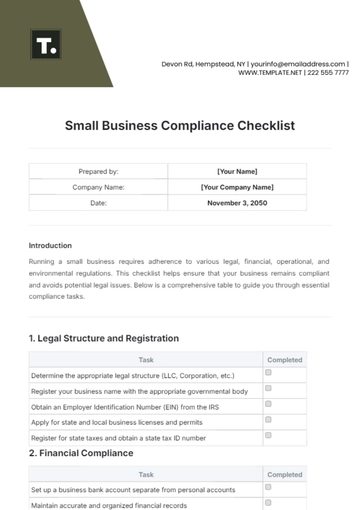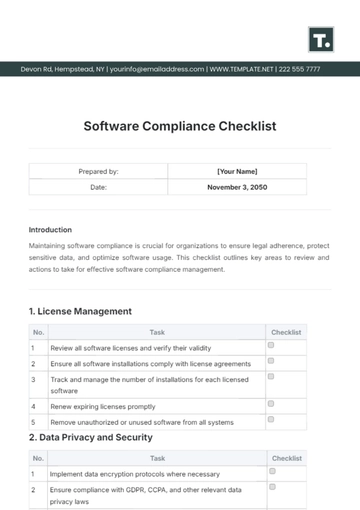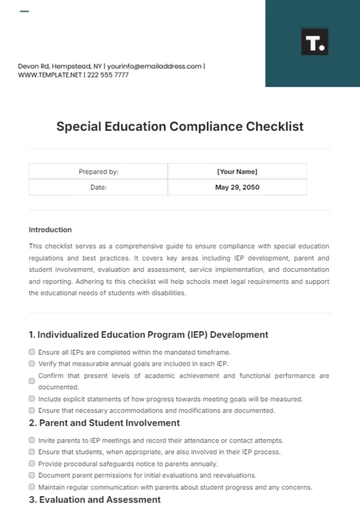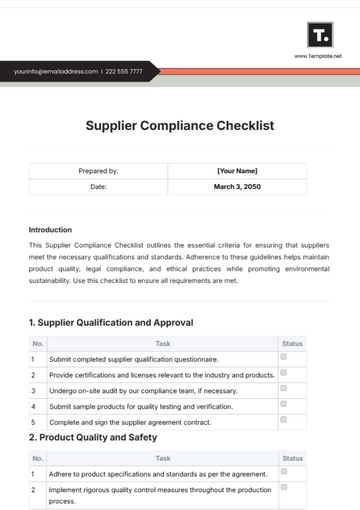Free Remote Work Compliance Checklist
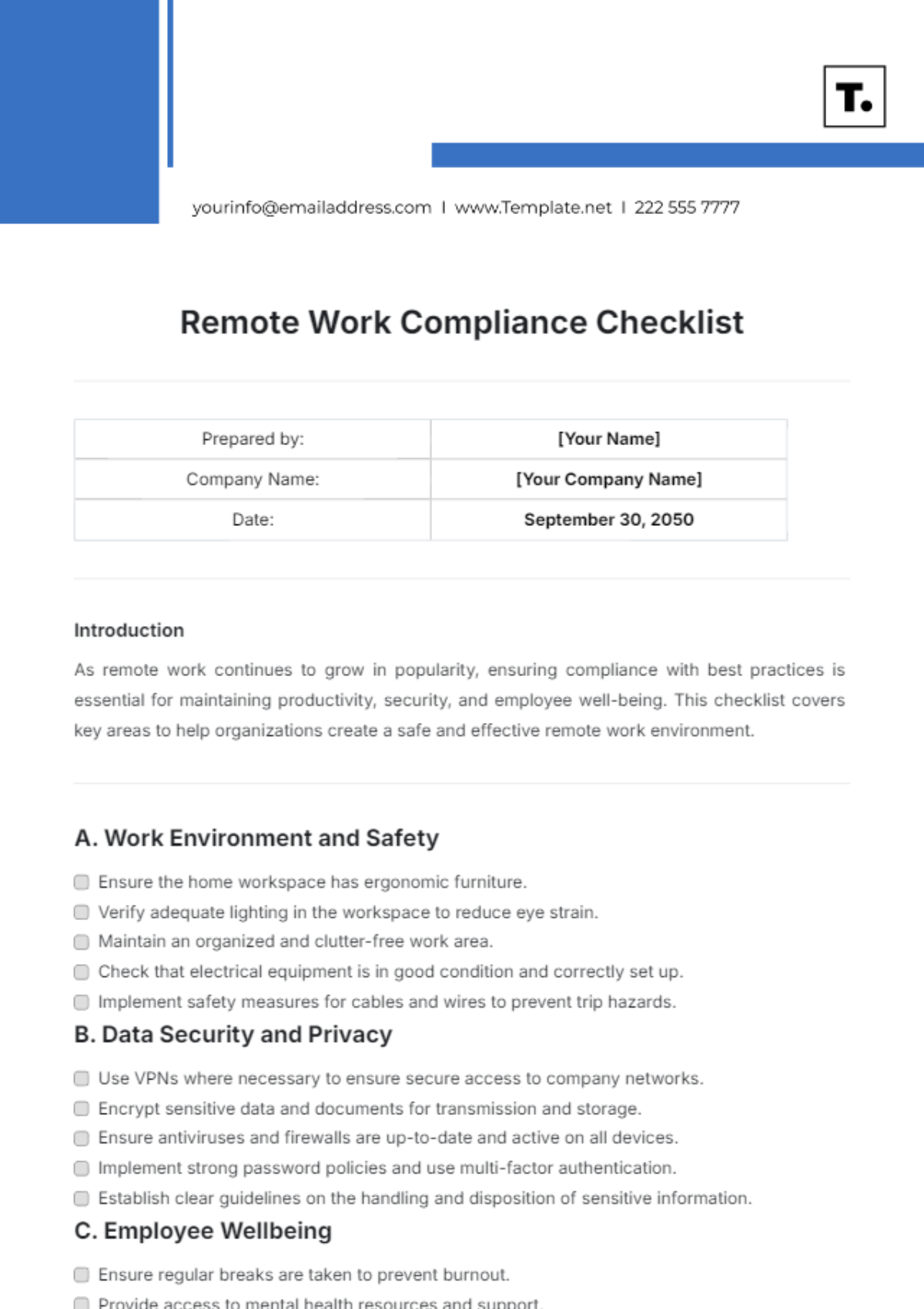
Prepared by: | [Your Name] |
Company Name: | [Your Company Name] |
Date: | September 30, 2050 |
Introduction
As remote work continues to grow in popularity, ensuring compliance with best practices is essential for maintaining productivity, security, and employee well-being. This checklist covers key areas to help organizations create a safe and effective remote work environment.
A. Work Environment and Safety
Ensure the home workspace has ergonomic furniture.
Verify adequate lighting in the workspace to reduce eye strain.
Maintain an organized and clutter-free work area.
Check that electrical equipment is in good condition and correctly set up.
Implement safety measures for cables and wires to prevent trip hazards.
B. Data Security and Privacy
Use VPNs where necessary to ensure secure access to company networks.
Encrypt sensitive data and documents for transmission and storage.
Ensure antiviruses and firewalls are up-to-date and active on all devices.
Implement strong password policies and use multi-factor authentication.
Establish clear guidelines on the handling and disposition of sensitive information.
C. Employee Wellbeing
Ensure regular breaks are taken to prevent burnout.
Provide access to mental health resources and support.
Encourage regular exercise and promote work-life balance.
Conduct regular check-ins to monitor employee wellbeing.
Provide resources for professional development and training.
D. Communication and Collaboration
Ensure regular team meetings and one-on-one check-ins.
Use collaborative tools such as shared documents and project management software.
Set clear communication protocols and response times.
Promote transparency through open communication channels.
Facilitate virtual team-building activities to foster team spirit.
E. Performance Monitoring and Accountability
Set clear performance targets and goals for remote employees.
Implement a performance review process tailored to remote work.
Make use of tracking tools to measure productivity and output.
Encourage employees to self-assess and report on their progress.
Provide feedback and recognition to maintain motivation and morale.
- 100% Customizable, free editor
- Access 1 Million+ Templates, photo’s & graphics
- Download or share as a template
- Click and replace photos, graphics, text, backgrounds
- Resize, crop, AI write & more
- Access advanced editor
Stay compliant while managing a remote workforce with the Remote Work Compliance Checklist Template from Template.net. This editable and customizable checklist covers data security, employee rights, and communication protocols. Easily editable in our Ai Editor Tool, it ensures that your remote operations meet all compliance standards, helping you maintain an efficient and lawful work environment.
You may also like
- Cleaning Checklist
- Daily Checklist
- Travel Checklist
- Self Care Checklist
- Risk Assessment Checklist
- Onboarding Checklist
- Quality Checklist
- Compliance Checklist
- Audit Checklist
- Registry Checklist
- HR Checklist
- Restaurant Checklist
- Checklist Layout
- Creative Checklist
- Sales Checklist
- Construction Checklist
- Task Checklist
- Professional Checklist
- Hotel Checklist
- Employee Checklist
- Moving Checklist
- Marketing Checklist
- Accounting Checklist
- Camping Checklist
- Packing Checklist
- Real Estate Checklist
- Cleaning Checklist Service
- New Employee Checklist
- Food Checklist
- Home Inspection Checklist
- Advertising Checklist
- Event Checklist
- SEO Checklist
- Assessment Checklist
- Inspection Checklist
- Baby Registry Checklist
- Induction Checklist
- Employee Training Checklist
- Medical Checklist
- Safety Checklist
- Site Checklist
- Job Checklist
- Service Checklist
- Nanny Checklist
- Building Checklist
- Work Checklist
- Office Checklist
- Training Checklist
- Website Checklist
- IT and Software Checklist
- Performance Checklist
- Project Checklist
- Startup Checklist
- Education Checklist
- Home Checklist
- School Checklist
- Maintenance Checklist
- Planning Checklist
- Manager Checklist
- Wedding Checklist
- Vehicle Checklist
- Travel Agency Checklist
- Vehicle Inspection Checklist
- Interior Design Checklist
- Backpacking Checklist
- Business Checklist
- Legal Checklist
- Nursing Home Checklist
- Weekly Checklist
- Recruitment Checklist
- Salon Checklist
- Baby Checklist
- Equipment Checklist
- Trade Show Checklist
- Party Checklist
- Hospital Bag Checklist
- Evaluation Checklist
- Agency Checklist
- First Apartment Checklist
- Hiring Checklist
- Opening Checklist
- Small Business Checklist
- Rental Checklist
- College Dorm Checklist
- New Puppy Checklist
- University Checklist
- Building Maintenance Checklist
- Work From Home Checklist
- Student Checklist
- Application Checklist
